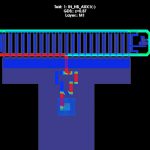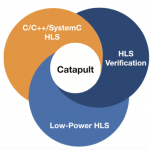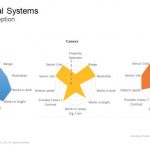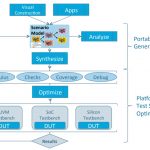In RF designs Low Noise Amplifiers (LNA) play a critical role in system operation. They simultaneously need to be extremely sensitive and noise free, yet also must be able to withstand strong signal input without distortion. LNA designers often struggle to meet device performance specifications. Their task is further complicated… Read More
Electronic Design Automation
GPU-Powered SPICE – Understanding the Cost
To deploy a GPU-based SPICE solution, you need to understand the costs involved. To get your hands on this new report analyzing this specific issue, all you need to do is attend Empyrean’s upcoming webinar, “GPU-Powered SPICE: The Way Forward for Analog Simulation,” which will be held on Thursday, August 8, 2019, at 10:00 am (PDT).… Read More
56th DAC – In Depth Look at Analog IP Migration from MunEDA
Every year at DAC, in addition to the hubbub of the exhibit floor and the relatively short technical sessions, there are a number of tutorials that dive in depth into interesting topics. At the 56th DAC in Las Vegas this year, MunEDA offered an interesting tutorial on Analog IP migration and optimization. This is a key issue for large… Read More
IP Provider Vidatronic Embraces the ClioSoft Design Management Platform
Having worked at several semiconductor intellectual property (SIP) companies, I know how important it is to have a strong design data management platform for tracking the development and distribution of SIP products. Everyone doing semiconductor design should care about design data management. But for an IP company, it is … Read More
Mentor Highlights HLS Customer Use in Automotive Applications
I’ve talked before about Mentor’s work in high-level synthesis (HLS) and machine learning (ML). An important advantage of HLS in these applications is its ability to very quickly adapt and optimize architecture and verify an implementation to an objective in a highly dynamic domain. Design for automotive applications – for … Read More
Virtuoso Adapts to Address Cyber Physical Systems
LIDAR is a controversial topic, with even Elon Musk weighing in on whether it will ever be feasible for use in self driving cars. His contention is that the sensors will remain too expensive and potentially be unreliable because of their mechanical complexity. However, each of the sensors available for autonomous driving have … Read More
IP Lifecycle Management and Permissions
My first professional experience with computers and file permissions was at Intel in the late 1970s, where we used big iron IBM mainframes located far away in another state, and each user could edit their own files along with browse shared files from co-workers in the same department. I saw this same file permission concept when … Read More
Taking the Pain out of UVM
If you are interested in gaining a deeper understanding of the many ways you can leverage the Universal Verification Methodology (UVM), Breker Verification Systems has gone to a lot of effort to put that information at your fingertips.
A technical subcommittee of Accellera voted to establish the UVM in December 2009. UVM was based… Read More
The Wild, Wild SEMICON West TechTALK – Joe Costello Speaks Out
On July 9, 2019, I attended the TechTALK session hosted by Dave Kelf of Breker Systems, Inc. titled, “Applied AI in Design-to-Manufacturing.” I was happy to hear what Dave had put together for this since it is a topic I am keenly interested in and because I have known Dave personally through music and charitable activities we have … Read More
5G and V2X
Amid the glamor of autonomous vehicles and hot new ADAS features, communication between vehicles and other vehicles, pedestrians, cyclists or infrastructure, generally labeled V2X, doesn’t get as much press, perhaps because adoption is still pretty early or because it’s technology under the hood (quite literally) and therefore… Read More











Rapidus, IBM, and the Billion-Dollar Silicon Sovereignty Bet